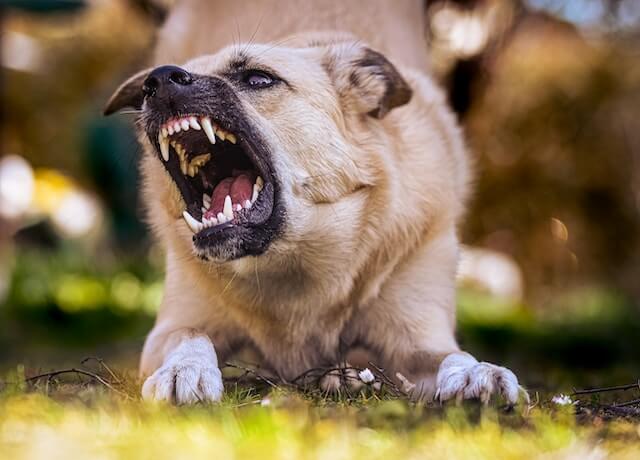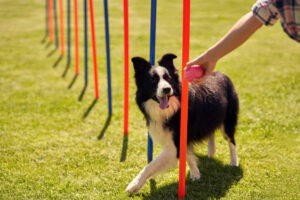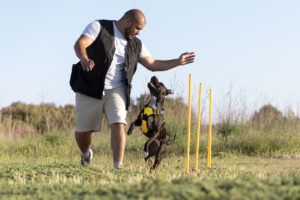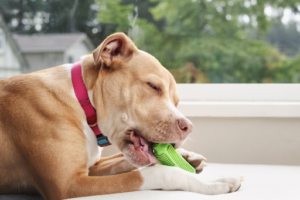Dogs are famed for their friendship, loyalty, and playful attitude. Yet, dogs can also demonstrate violent behavior at times. While aggression in dogs is common, it’s important to be able to recognize the different types of dog aggression and know how to manage them.
Dogs often communicate through aggression, but it’s not desirable or healthy for them to show hostility towards humans or other animals. There are many reasons why dogs may become aggressive, from fear and anxiety to feeling protective of their territory.
This article explores the different types of aggression in dogs and how they can be managed.
Understanding the Types of Dog Aggression
Dog aggression can take several forms. We’ll discuss some of the most common ones here.
Territorial Aggression
Territorial behavior often emerges between the ages of one and three years, according to the American Society for the Prevention of Cruelty to Animals.
This type of aggression occurs when a dog feels a danger to its territory, such as its house or yard. This type of aggression stems from the dog believing it’s in charge of protecting its home. It may be seen when visitors come over, or another dog enters its territory.
If you want to reduce your dog’s territorial response, you should encourage calm behavior when visitors are present and provide rewards for good behavior.
Fear Aggression
Fear aggression is a type of protection mechanism the dog uses to protect itself.
A scared dog may show signs of terror, such as withdrawing and adopting a frightened posture. However, it may also become aggressive. This often occurs when dogs meet with sudden movement, loud noises, or unfamiliar people and situations.
The best way to reduce fear aggression is to gradually introduce the dog to these situations so it can become accustomed to them. For instance, if your dog is scared of people, try introducing it to your friends and family slowly and calmly.
If your dog shows signs of fear, it’s best to consult a professional to help you manage this behavior.
Resource Guarding Aggression
When a dog feels a threat to its things, like food, toys, or even its sleeping location, it gets hostile. This type of aggression in dogs may involve growling, while more severe cases can cause the dog to bite.
It’s perfectly normal in wild animals, but for pets, it can be certainly troublesome.
If your dog exhibits signs of resource guarding, it’s important to teach them that they will be rewarded for sharing. If they continue fighting over an item, simply remove it and give them something else that they can enjoy.
You can also use treats or toys that are ideal for your dog to relieve tension and anxiety while reinforcing positive behavior at the same time.
Reactive Aggression
Reactive aggression occurs when a dog perceives a threat and responds without thinking. This type of aggression is usually seen in social situations like greeting other dogs.
Dogs that are reactive may show signs of anxiousness, such as excessive barking or growling. If this situation escalates, it can result in biting.
The best way to reduce this type of aggression is to teach your dog how to relax and self-soothe when faced with a trigger. You can also train them to respond positively when encountering other dogs.
Predatory Aggression
Dogs are linked to wolves and coyotes. Both are predators, so companion dogs still exhibit certain traditional canine predatory characteristics. This includes chasing and seizing fast-moving objects.
Predatory hostility is mostly restricted to hunting dogs or dogs who chase prey. If your pet displays aggression towards people, it’s a sign of a potential physical or mental disorder that your veterinarian should address.
To stop predatory aggressiveness, the best thing to do is to avoid the situation that triggers it. Rather than playing prey games in the yard, consider taking your dog for a walk instead.
Conclusion
For pet owners, it is essential to understand the different types of dog aggression. Each form has its distinct triggers and reasons, making it crucial to identify which type of aggression your dog is exhibiting to intervene appropriately.
With proper training and socialization, you can help your dog become more relaxed and friendly. For further advice on how to manage aggression in dogs, visit the PetFitness blog today!







